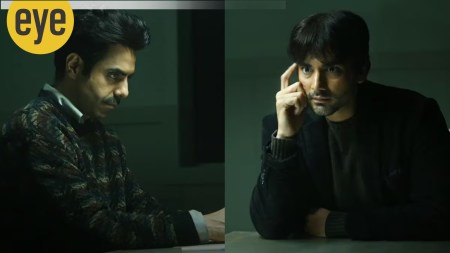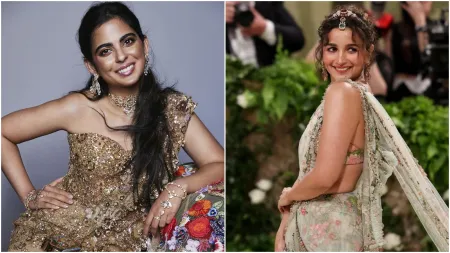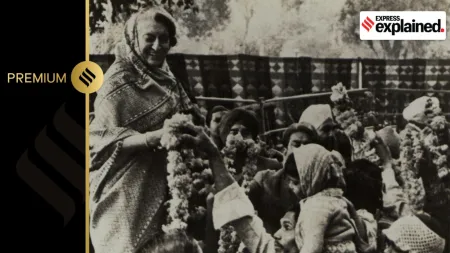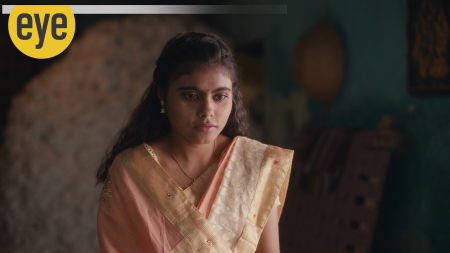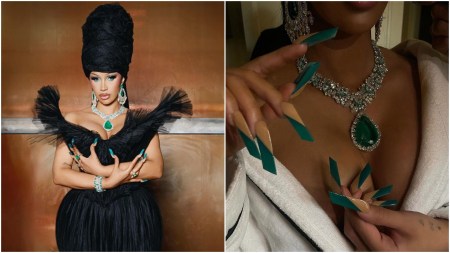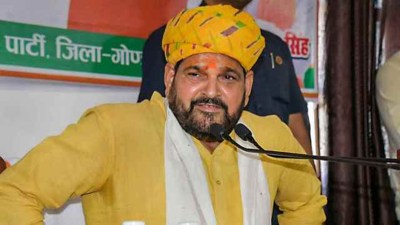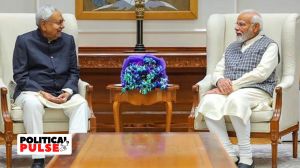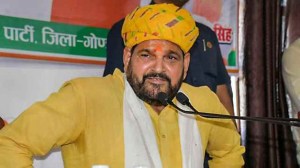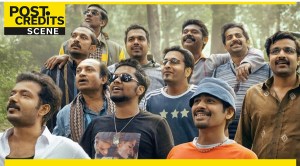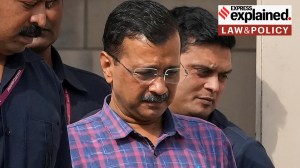- India
- International
Coronation Park: An address in Delhi synonymous with rise and wane of British power
It was renovated in 2011 for the centenary anniversary of the 1911 durbar and opened to the public to be used as a park.
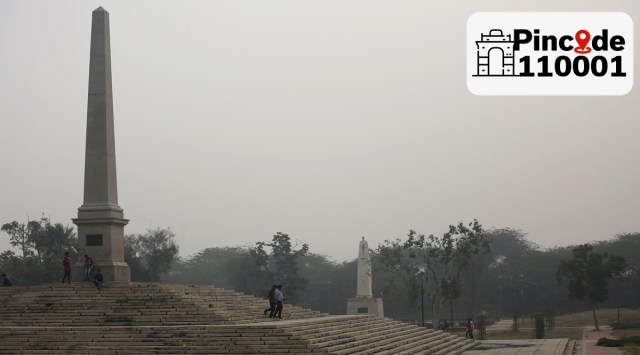 In the middle of the park, exactly where the 1911 Durbar was held, stands a tall stone obelisk commemorating the Durbar held in honour of George V's ascension to the throne. (Express file photo by Tashi Tobgyal)
In the middle of the park, exactly where the 1911 Durbar was held, stands a tall stone obelisk commemorating the Durbar held in honour of George V's ascension to the throne. (Express file photo by Tashi Tobgyal) Upon entering the Coronation Park’s gates, the contrast between its interior and the outside world of Burari where it is situated is stark. This is the same place where the coronation of as many as three British monarchs were celebrated many decades ago.
Shortly after the 1857 rebellion, it was decided that the East India Company’s rule would be replaced by direct rule by the Crown. The first Durbar was organised in 1877 at the park and while Queen Victoria did not attend it, it was used to announce the crown’s takeover of India.
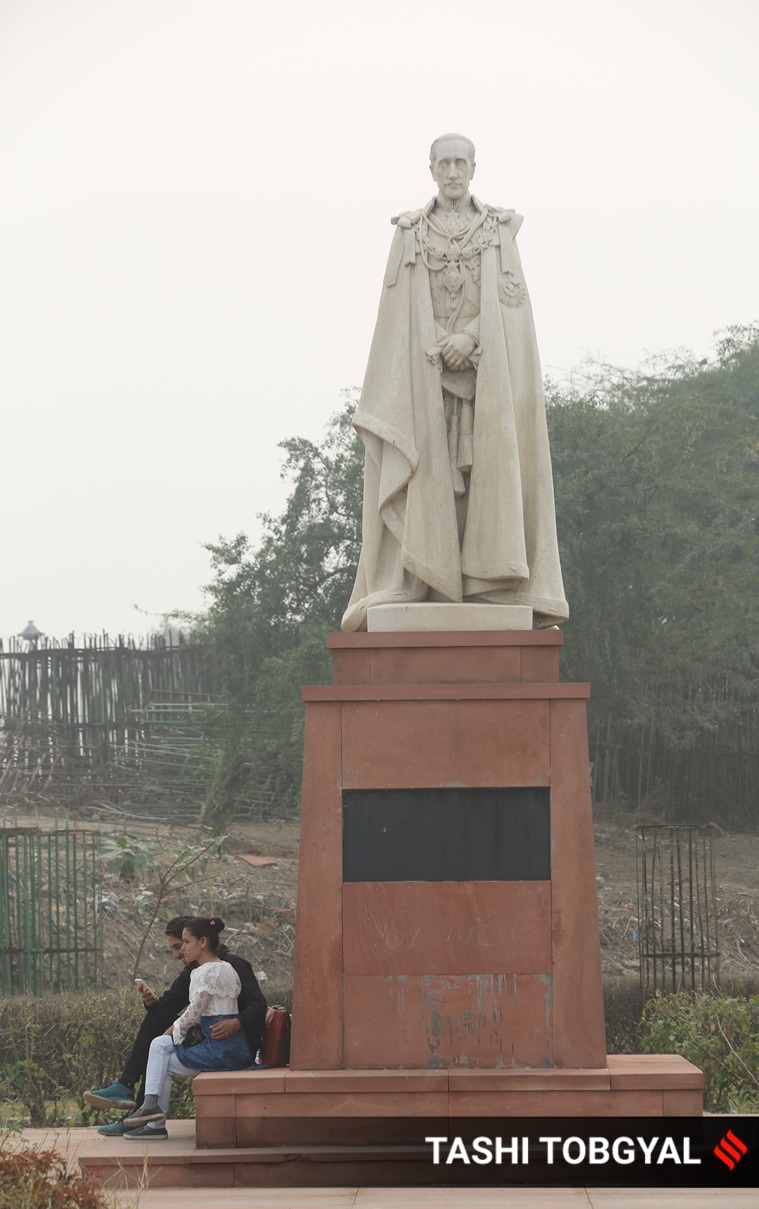 Beside the obelisk is a statue of the King himself standing solemnly, which had earlier stood at the India Gate till the 1960s before it was unceremoniously removed. (Express file photo by Tashi Tobgyal)
Beside the obelisk is a statue of the King himself standing solemnly, which had earlier stood at the India Gate till the 1960s before it was unceremoniously removed. (Express file photo by Tashi Tobgyal)
Notably, despite the capital of the Raj still being in Calcutta, the Durbar was organised in Delhi. The move to conduct the celebrations in Delhi proved to be a popular one with the then Princely States invited to the Durbar.
It was also where Ganesh Vasudeo Joshi, a founding member of the Poona Sarvajanik Sabha, took the opportunity to politely ask the Queen “to grant to India the same political and social status as is enjoyed by her British subjects”.
According to Swapna Liddle, Delhi was seen as the historic capital of India, the seat of the Mughals from where they once ruled over a large part of the subcontinent. In an interview with the Delhi Art Gallery, she shared that Abul Fazl’s Akbar Nama claimed that Delhi had been the seat of power since the time of Indraprastha. However, Delhi only emerged as a power centre in the late thirteenth century.

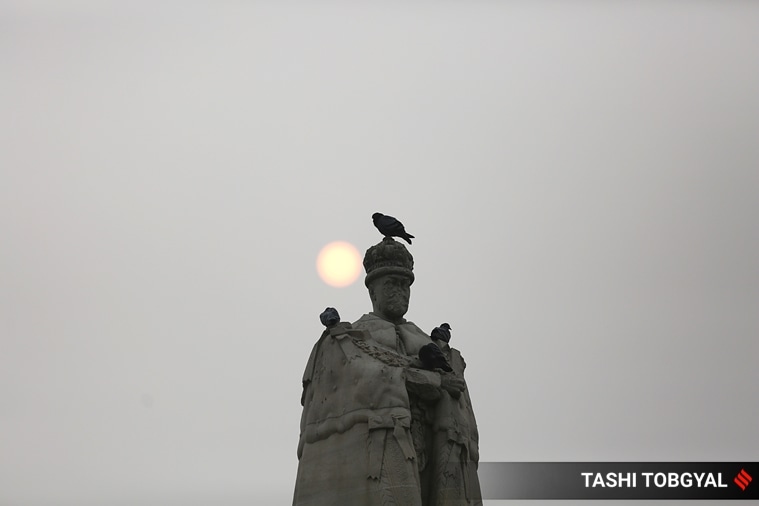 When Edward VII succeeded Victoria, a similar ceremony was held in 1903 in the same spot. (Express file photo by Tashi Tobgyal)
When Edward VII succeeded Victoria, a similar ceremony was held in 1903 in the same spot. (Express file photo by Tashi Tobgyal)
“The British latched onto this existing narrative, drawing upon this historical association with power,” says Liddle. “Their perspective wasn’t limited to Mughal history but also included the Sultanate era and even figures like Prithviraj Chauhan, despite the fact that the Chauhans hailed from Ajmer. It’s essentially a constructed history, but one that captivated imaginations and continues to do so.” she says.
When Edward VII succeeded Victoria, a similar ceremony was held in 1903 in the same spot. Then again in 1911, a grander Durbar was held to celebrate the coronation of George V where it was announced that the Raj’s capital was being shifted from Calcutta to Delhi.
In the middle of the park, exactly where the 1911 Durbar was held, stands a tall stone obelisk commemorating the Durbar held in honour of George V’s ascension to the throne. Beside the obelisk is a statue of the King himself standing solemnly, which had earlier stood at the India Gate till the 1960s before it was unceremoniously removed. The park also houses statues of King Edward VII and Viceroys such as Lord Hardinge and Lord Chelmsford, among others. Tucked away on another end of the park is an open gym, where locals gather to exercise.
Among the three Durbar gatherings held at the park, it is the 1903 event that perhaps most vividly lingers in the collective memory. The two weeks of festivities were overseen with meticulous detail by the then Viceroy of India, Lord Curzon. Again, the King never attended the festivities and sent his brother Duke of Connaught in his stead.
The Coronation Durbar swiftly earned the moniker of the “Curzonization Durbar,” as suspicions arose that Lord Curzon viewed the occasion less as a celebration of the new king’s ascension and more as a personal commemoration of his own Viceroyalty. This was especially highlighted by Curzon’s entry into Delhi and the Durbar atop a bejewelled elephant, leading a convoy of several Indian kings and princes seated on gold-adorned elephants as well.
Satirist and poet Akbar Allahabadi sarcastically recalled in his nazm Jalwa-e-Darbar-e-Dilli how the barren river plain was transformed into a sea of tents, how soldiers marched in full regalia carrying bayonets and spears, and how suddenly the areas adjoining the Durbar were bestowed with water pumps and streetlights.
It would also lead to the downfall of Curzon. Disputes over the escalating expenses, particularly since India was still reeling under the immense aftereffects of a famine, left a lingering bitterness for years to come. In March 1911, the Under-Secretary of India, Edwin Montagu, would reveal to the House of Commons that the Durbar cost the crown around £2,99,000.
Not even the 1911 Durbar could surpass the glitz and glamour of its predecessor. The only events of note that took place during the ceremony were the announcement of the decision to shift the capital to Delhi and the annulment of the 1905 Bengal partition. And, of course, the infamous appearance of the Gaekwad of Baroda, Maharaja Sayajirao III, conspicuously without his jewels and his show of dissent towards the British monarch by simply bowing and leaving with his back towards the royal couple.
A fourth Durbar was supposed to be held in Coronation Park in 1937 after George VI ascended the throne following Edward VIII’s abdication. However, with India’s shifting political reality and the King’s ill-health, the Durbar was postponed, and ultimately never held.
The park slowly transformed into a scrapyard for the relics of the Raj, where statues of Kings, Governors, and Viceroys were abandoned to gather mildew. It was renovated in 2011 for the centenary anniversary of the 1911 durbar and opened to the public to be used as a park.
Buzzing Now
May 10: Latest News
- 01
- 02
- 03
- 04
- 05


